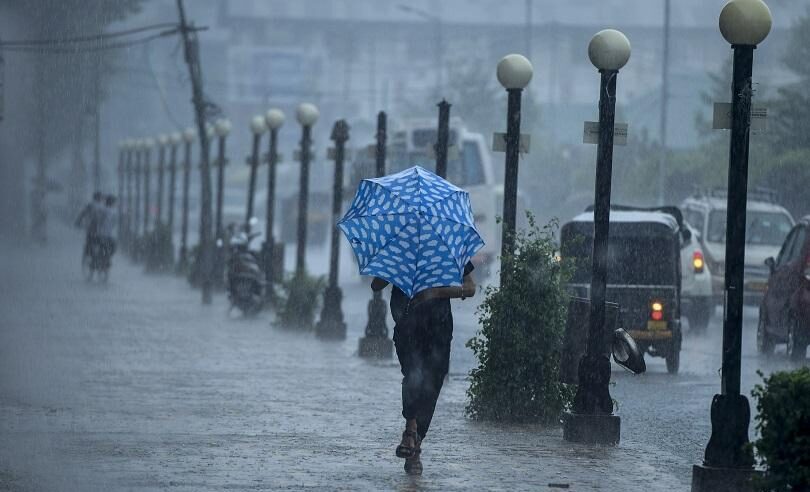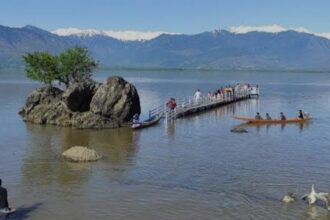Historical Context of J&K’s Climate Patterns
Jammu and Kashmir (J&K) is renowned for its breathtaking landscapes, which include lush valleys, towering mountains, and pristine lakes. However, the region’s climate has undergone significant changes in recent years, leading to alarming environmental challenges. Historically, J&K has enjoyed a temperate climate with predictable seasonal patterns; however, the last few years have seen a dramatic shift. The year 2023 was declared one of the hottest on record for the region, with prolonged dry spells and erratic weather patterns becoming increasingly common. This shift has raised concerns among scientists and policymakers about the long-term implications for agriculture, water resources, and overall ecological balance.
The geographical diversity of J&K plays a crucial role in its climate. The region’s elevation and varied topography contribute to microclimates that can significantly differ even within short distances. As such, local weather variations must be closely monitored to understand their broader implications on agriculture and water supply. The changing climate threatens not only the natural beauty of the region but also the livelihoods of millions who depend on its resources.
Unprecedented Rainfall Deficit: A Deepening Crisis
The current rainfall deficit in Jammu and Kashmir stands at a staggering 78% since October 2024, marking an alarming trend that could have dire consequences for the region’s ecology and economy. With only 21 mm of precipitation recorded against a normal expectation of 97.1 mm, the situation is critical. This deficiency is particularly pronounced in South Kashmir, where districts like Shopian have reported a 96% deficit. Such extreme shortages threaten agricultural productivity, as farmers rely heavily on seasonal rains for irrigation.
The impact of this rainfall deficit is felt most acutely in agricultural districts where crops are failing due to insufficient moisture. For instance, Shopian is not only known for its apple orchards but also serves as a vital agricultural hub for the region. The ongoing drought conditions jeopardize food security and economic stability for farmers who are already struggling with rising costs and market fluctuations.
In addition to Shopian, other districts such as Poonch (95% deficit), Kulgam (94% deficit), and Budgam (90% deficit) are facing similar challenges. Srinagar, the summer capital of J&K, has recorded an 87% rainfall deficit, further compounding the crisis. In stark contrast, Samba district is an anomaly with above-normal rainfall recorded at 47 mm against an expected 41.76 mm. This localized variation highlights the need for targeted interventions to manage water resources effectively across different regions.
Intense Cold Wave: Meteorological Extremes
As if the rainfall deficit were not enough, Jammu and Kashmir is also grappling with an intense cold wave that has gripped the region this winter. Recent temperature recordings indicate that Srinagar experienced its coldest night of the season at -6.0°C, while other areas like Qazigund recorded lows of -7.0°C and Pahalgam reached -6.8°C. These temperatures are significantly below historical averages and pose serious risks to both human health and infrastructure.
The cold wave has resulted in frozen water supply lines, increased heating costs for households, and heightened vulnerability for outdoor workers and livestock. The combination of extreme cold and lack of precipitation creates a challenging environment where both people and nature struggle to adapt. Furthermore, these conditions can exacerbate existing health problems among vulnerable populations, particularly those with respiratory issues or other chronic illnesses.
Meteorological forecasts predict continued dry weather until late December 2024, with only sporadic light snowfall expected in higher reaches. Such forecasts raise concerns about long-term ecological impacts, including increased stress on already vulnerable ecosystems and wildlife populations.
Comprehensive Weather Forecast
The Meteorological Department’s short-term predictions indicate that Jammu and Kashmir will experience dry weather conditions over the next few weeks, with light snowfall anticipated on December 21-22 in higher elevations. Following this period, another dry spell is expected from December 23-24 before light snowfall returns around December 27-28. By December 31, additional light snow may fall in select areas.
This forecast underscores the urgent need for effective water management strategies to cope with prolonged dry spells while preparing for potential flooding during snowmelt periods in spring. The cold wave is expected to persist at isolated locations throughout this period, necessitating caution among residents regarding icy road conditions and sub-zero temperatures.
Potential Socio-Economic Implications
The combined effects of severe rainfall deficits and extreme cold temperatures pose significant socio-economic challenges for Jammu and Kashmir. Agriculture—the backbone of the local economy—is particularly vulnerable; farmers are facing crop failures due to insufficient moisture levels while simultaneously grappling with rising costs associated with heating during colder months.
Additionally, water resource management becomes critical as reduced snowfall impacts river levels and groundwater recharge rates. The Jhelum River and Dal Lake have already shown signs of distress due to low water levels during summer months; if current trends continue, these vital water sources could face irreversible damage.
Public health is another area at risk; air pollution exacerbated by winter fog contributes to respiratory illnesses that claim thousands of lives annually in J&K. The combination of environmental degradation from tourism-related activities—such as waste disposal in sensitive areas—and climate-induced health risks creates a complex public health landscape that requires immediate attention from authorities.
Recommendations and Mitigation Strategies
To address these multifaceted challenges effectively, Jammu and Kashmir must adopt comprehensive strategies focusing on sustainable practices across various sectors:
- Immediate Water Conservation Measures: Implement rainwater harvesting systems and promote efficient irrigation techniques among farmers to maximize water use efficiency.
- Agricultural Adaptation Techniques: Encourage research into drought-resistant crop varieties while providing training for farmers on sustainable farming practices tailored to changing climatic conditions.
- Enhanced Healthcare Preparedness: Strengthen healthcare infrastructure to deal with climate-related health issues by increasing access to medical services in remote areas.
- Community-Level Resilience Building: Engage local communities in disaster preparedness programs that focus on resilience against extreme weather events.
- Climate Change Mitigation Initiatives: Develop policies aimed at reducing carbon emissions through renewable energy projects while promoting eco-tourism that respects local ecosystems.
Conclusion
The current environmental scenario in Jammu and Kashmir represents a critical juncture that demands immediate action from governmental bodies as well as community stakeholders. By prioritizing sustainable development practices and implementing effective climate action plans tailored to local needs, J&K can work towards preserving its unique ecological heritage while ensuring the well-being of its residents amidst ongoing climatic challenges.







